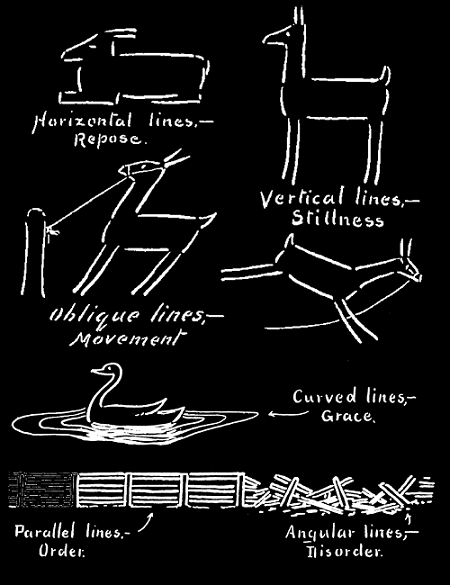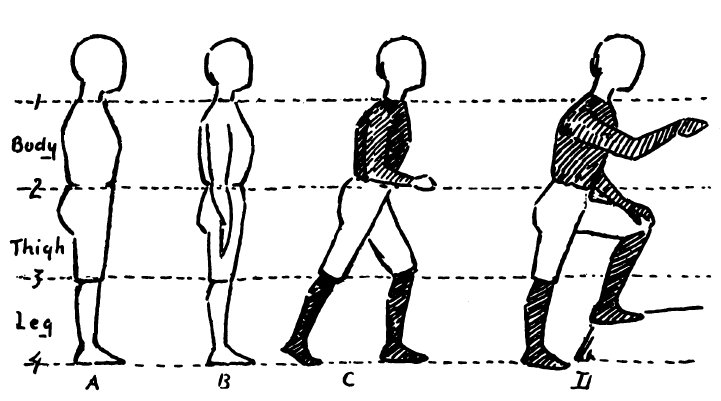Lesson 22: Figures (Direction, Action, and Rhythm)
Instructors review the following about action drawing with children:

- Direction implies motion, and motion in drawing, is largely indicated by lines.
- Vertical lines express stillness.
- Horizontal lines indicate repose.
- Oblique lines suggest movement.
- Curved lines express grace.
- Parallel lines suggest order.
- Angular lines suggest chaos.
Instructors tell children - The Study of Action may be divided into four parts:
- The action of growth as seen in growing plants.
- The action of inanimate form as seen in moving objects, or such as is caused by gravity, wind, water, and artificial forces.
- The action of animate form as seen in the movements of birds, animals, and the human figure.
- The action of rhythm as suggested in the graceful and harmonious relation of lines, also seen in form and color.
Instructors teach children the following ways of drawing the human figure:
- Draw four lines or spaces equally distant apart, 1, 2, 3, and 4.
- Between 1 and 2 draw the body from the neck to the belt.
- Between 2 and 3 draw the thigh from the belt to the knee.
- Between 3 and 4 draw the leg from the knee to the bottom of the foot.
- Place the head in position by aid of the judgment alone.
Children complete the following drill work:
- Draw A on paper and a whiteboard.
- Draw B on paper and a whiteboard.
- Draw C on paper and a whiteboard.
- Draw D on paper and a whiteboard.

 Third Year Drawing
Third Year Drawing
Third Year Drawing
Third Year Drawing


